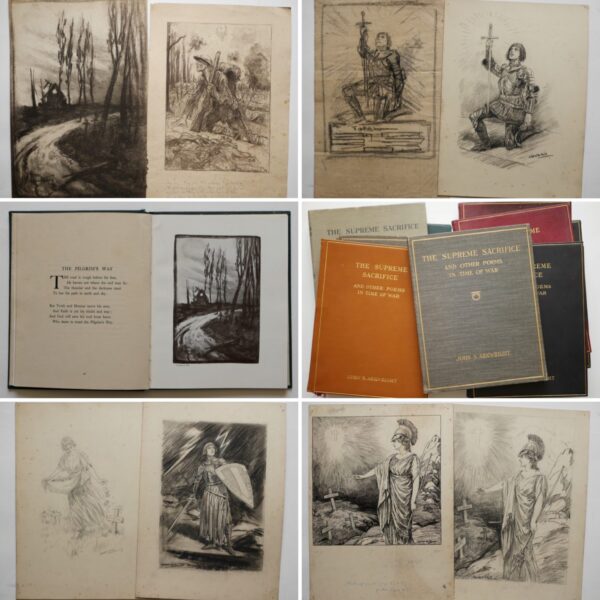Raemaekers, Louis (1869-1956)
Louis Raemaekers was born in Roermond in the Netherlands. Louis’ father published a weekly journal called De Volksvriend (Friend of the People) and was an influential man in liberal circles. His mother was of German descent. He was trained and later working as a drawing teacher made landscapes and children’s books covers and illustrations in his free time. In 1906 his life took a decisive turn when he accepted the invitation to draw political cartoons for leading Dutch newspapers, first from 1906 till 1909 for the “Algemeen Handelsblad” and from 1909 onwards for “De Telegraaf”.
During The First World War Louis Raemaekers became one of the Germans fiercest critics. His message was clear: the Netherlands had to take sides for the Allies and abandon its neutral stance. His graphic cartoons depicted the rule of the German military in Belgium, portrayed the Germans as barbarians and Kaiser Wilhelm II as an ally of Satan. His work was confiscated on several occasions by the Dutch government, and he was criticized by many for endangering the Dutch neutrality. The minister of Foreign Affairs John Loudon invited Raemaekers, the owner of De Telegraaf H.M.C. Holdert and the editor-in-chief Kick Schröder under pressure from the German government to a meeting, at which he requested them to avoid ‘anything that tends towards insulting the German Kaiser and the German army’. It was not possible to prosecute Raemaekers for as long as the country was not under martial law. But the pressure on him continued, also from Germany: in September 1915 the rumor even started circulating that the German government had offered a reward of 12,000 guilders for Raemaekers, dead or alive, but proof of an official statement has never been found.
Louis Raemaekers achieved his greatest successes outside his native country. He left for London in November 1915, where his work was exhibited in the Fine Art Society on Bond Street. It was received with much acclaim. Raemaekers became an instant celebrity, and his drawings were the talk of the town: ‘they formed the subject of pulpit addresses, and for two months, the galleries where they have been exhibited have been thronged to excess. Practically every cartoon has been purchased at considerable prices.’ He decided to settle in England and his family followed in early 1916. His leaving the Netherlands for London was a godsend for all concerned. Henceforth, the Dutch government could distance itself from the cartoonist and his work in its diplomatic relations, thus stabilising its position vis-à-vis Germany, while Raemaekers himself could cease his hopeless campaign to get the Netherlands to abandon its neutral stance. He may also have realised for himself that his aim of persuading his country to take up arms and thus avoid the fate of Belgium was not very realistic. From early 1915 Raemaekers’ cartoons had already appeared in British newspapers and magazines. In early 1916 he signed a contract with the Daily Mail and they appeared in this newspaper on a regular basis for the next two years.
Following the end of the First World War, Louis Raemaekers settled in Brussels. He became an advocate of the League of Nations and devoted many sketches and articles to the cause of unity in Europe.
Shortly before the start of the Second World War Raemakers fled to the United States and remained there until 1946, when he returned to Brussels. He died in Scheveningen near The Hague in 1956.
Showing the single result
